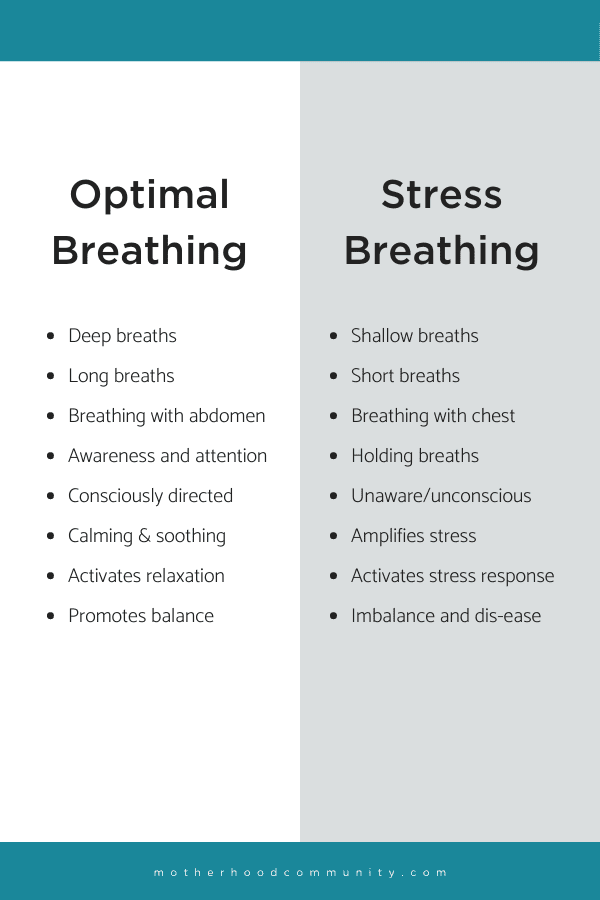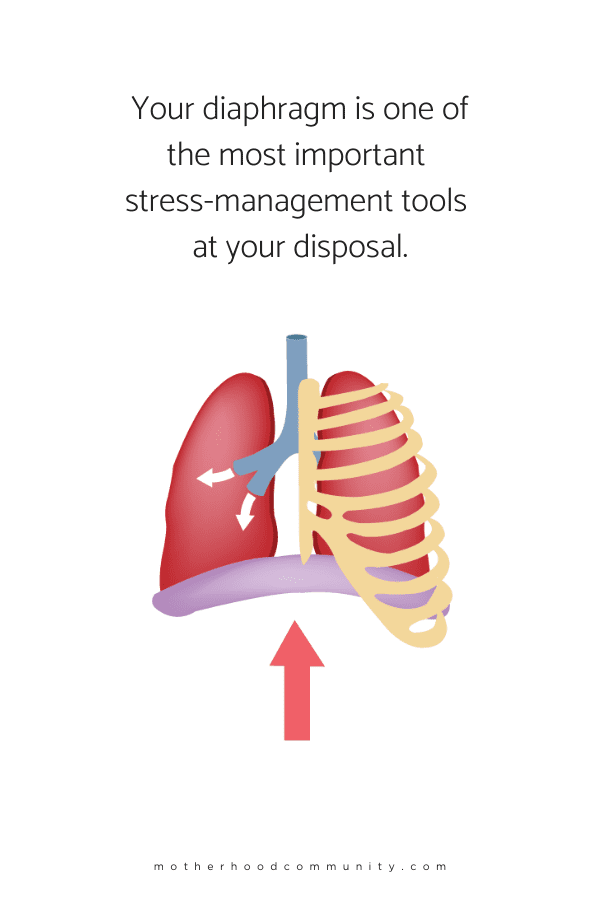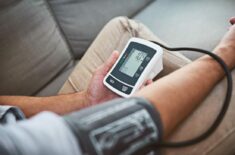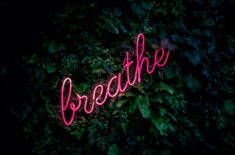Just as we have an optimal quantity of water and food to consume each day, we also have an optimal quantity of air to breathe. And just as eating too much can be damaging to our health, so can overbreathing.
– Patrick McKeown, author of ‘The Oxygen Advantage: The Simple, Scientifically Proven Breathing Techniques for a Healthier, Slimmer, Faster, and Fitter You”
What’s the first thing we’re told when we have a freak-out moment?
“Take a deep breath…” right?
Most of us generally know that changing our breathing pattern can lead to some degree of stress reduction or emotional/mental shift.
You’ve probably heard that deep breathing exercises are good for you and that they offer many health benefits.
Benefits of deep breathing
- improved immune function
- lower blood pressure
- a decrease in stress hormones
- better sleep
- improved digestion
- lower inflammation levels
- increased heart-rate variability (HRV)
- lower risk of heart disease
- lower anxiety levels
- more manageable panic attacks
- better focus and concentration
- deeper intuitive wisdom
What you probably haven’t heard, though, is that if done incorrectly, deep breathing can be dangerous too…
The dangers of taking a BIG breath
Deep breathing is not the same as big breathing.
Controlled, deliberate deep breathing should not be confused with ‘big breathing,’ which is taking in bigger-than-necessary volume breaths.
This leads to over-breathing and can seriously mess with the delicate balance of the oxygen-carbon dioxide exchange taking place inside your body.
Over-breathing or hyperventilation can cause you to expel too much carbon dioxide, which impairs blood flow to the brain.
This can make you feel lightheaded or experience tingling sensations. (1)
Hyperventilation can lead to a state called hypoxia, low oxygen levels in your cells and tissues.
Less oxygen means our cells don’t produce as much energy, and the end result is that we feel tired, fatigued, and lethargic.
Lack of oxygen can make it difficult to concentrate and remember things. (2)
It can make Mom Brain worse.
Here’s what happens to your brain after just two minutes of over-breathing… notice the 40% drop in oxygen:

If you suffer from intense anxiety or panic attacks or know you’re prone to hyperventilating, consult with your doctor or practitioner before engaging in any type of controlled breathwork because some techniques may actually worsen your condition.
How to tell if you’re over-breathing
In his bookThe Oxygen Advantage,breathing expert Patrick McKeown outlines a set of questions to help you assess whether you’re over-breathing or not: (3)
- Do you sometimes breathe through your mouth as you go about your daily activities?
- Do you breathe through your mouth during deep sleep? (If you are not sure, do you wake up with a dry mouth in the morning?)
- Do you snore or hold your breath during sleep?
- Can you visibly notice your breathing during rest? To find out, take a look at your breathing right now. Spend a minute observing the movements of your chest or abdomen as you take each breath. The more movement you see, the heavier you breathe.
- When you observe your breathing, do you see more movements from the chest than from the abdomen?
- Do you regularly sigh throughout the day? (While one sigh every now and again is not an issue, regular sighing is enough to maintain chronic over-breathing.)
- Do you sometimes hear your breathing during rest?
- Do you experience symptoms resulting from habitual over-breathing, such as nasal congestion, tightening of the airways, fatigue, dizziness, or light-headedness?
Nostril breathing vs mouth breathing
Some might also think that ‘deep breathing’ or other controlled breathing exercises done via an open mouth offer the same benefits, but they don’t.
Quite the opposite:
Benefits of nostril breathing:
– Nostril breathing protects us from various harmful external particles like dust, bacteria, and microbes via tiny little hairs called cilia. These hairs clean, warm, and humidify the incoming air and guard us against as many as 20 billion outside particles daily. (4)
– Nostril exhaling creates more air pressure and slows the exhalation down because it is a smaller orifice than the mouth. This helps the lungs optimize oxygen intake. (5)
Nose breathing imposes approximately 50 percent more resistance to the air stream, as compared to mouth breathing. This results in 10 to 20 percent more oxygen uptake.
– Dr Alan Ruth, Behavioural Medicine Practitioner
– It helps us engage our diaphragm more efficiently. (6)
– Nostril inhalation increases nitric oxide intake, which helps ensure smooth transportation of more oxygen throughout the whole body. (6)
Drawbacks of mouth breathing:
– Chronic mouth breathing can lead to chronic over-breathing and chest breathing.
– Mouth breathing signals to your brain that carbon dioxide levels are quickly decreasing, so the body produces more mucus as an attempt to get you to breathe more slowly. (5)
– Chronic mouth breathing can alter your facial structure and change your facial features. For example, it can make your face and jaw more narrow and droopy, which can lead to obstructive sleep apnea and snoring. (7)
– Chronic mouth breathing dries the mucous lining of the airways, and it doesn’t warm or moisturize air as nostril breathing does, so it also doesn’t protect from pathogens and allergens either. (8)
– Mouth breathing can lead to trauma to soft tissues in the airways as well as enlarged tonsils and adenoids. (6)
Temporary mouth breathing due to a cold, for example, is not the same as chronic mouth breathing, which involves a learned state.
This will require some reprogramming of habits and behaviors to correct.
Physician and New York Times bestselling author Dr. Joseph Mercola explains the dangers of mouth breathing like this: (9)
“Most people believe that taking bigger breaths through your mouth allows you to take more oxygen into your body, which should make you feel better and more clear-headed. However, the opposite actually happens.
Deep mouth breathing tends to make you feel light-headed, and this is due to eliminating too much carbon dioxide from your lungs, which causes your blood vessels to constrict.
So, the heavier you breathe, the less oxygen is actually delivered throughout your body.
And, contrary to popular belief, carbon dioxide is not merely a waste gas.
Although you breathe to get rid of excess carbon dioxide, it’s important to maintain a certain amount of it in your lungs — and for that, you need to maintain a normal breathing volume.
When too much carbon dioxide is lost through heavy breathing, it causes the smooth muscles embedded in your airways to constrict.
When this happens, there is a feeling of not getting enough air and the natural reaction is to breathe more intensely.
But this simply causes an even greater loss of carbon dioxide, which constricts your airway even further.
To remedy the situation you need to break this negative feedback loop by breathing through your nose and breathing less.”
How to breathe optimally(and why you’re probably doing it wrong)
Improper breathing is a common cause of ill health.
If I had to limit my advice on healthier living to just one tip, it would be simply to learn how to breathe correctly.
There is no single more powerful – or more simple – daily practice to further your health and wellbeing than breathwork.
– Andrew Weil, MD, author of Spontaneous Healing
The secret to optimal breathing lies in the top part of your belly.
There, at the bottom of your rib cage, you’ll find your diaphragm – the most important muscle in the entire breathing process.
Most of us think we know how to breathe optimally and deeply.
But the truth is that most of us are doing it wrong.
If you experience chronic stress and/or anxiety, chances are you’re stress breathing (shallow breathing) instead of optimally breathing.
This means you’re breathing with your chest and your upper respiratory area instead of breathing with your abdomen and lower respiratory area.
True, regenerating deep breathing… is belly breathing.
You know you’re breathing optimally when your lower belly rises when you fill your lungs with air.
Belly breathing is also known as abdominal breathing or diaphragmatic breathing because it engages the diaphragm. (10)
When we inhale, the diaphragm contracts and moves down towards the abdominal organs. The lungs move downward with it as they expand and fill with oxygen.
When we exhale, the diaphragm relaxes and moves upwards while pressing on the lungs, this helps release carbon dioxide.
So now let’s put all this into action… Breathe along with the emblem below.
Breathe in and out through the nostrils only.
Close your mouth.
Sit up straight.
As the emblem expands, breathe inwardly and engage your diaphragm by expanding your lower belly outwards.
Be mindful that you’re not moving your chest and upper body.
Just keep the focus on your lower belly.
As the emblem shrinks, breathe outwardly and contract your diaphragm by drawing the lower belly inwards towards your navel.

Your breath is nature’s ultimate chill pill & stress management tool
If you catch yourself stress breathing (short and shallow breaths) or over-breathing (overly big breaths) just remember you can override your nervous system by bringing attention, awareness, and intention to your breathing rate.
Slow down.
Extend the exhalations so that they’re longer than the inhalations.
Breathing slowly and deeply from the lower belly influences your autonomic nervous system (ANS) and causes it to switch gears.
Your ANS is comprised of two gears:
1) The Accelerator (aka sympathetic nervous system):
Just like putting your foot on the gas pedal causes your car’s engine to rev, breathing incorrectly causes a prolongation of the stress response.
2) The Brake (aka parasympathetic nervous system):
Long exhalations and slow breathing cycles activate this gear’s calming and regenerative relaxation response.
It’s hypothesized that slow and deep pranayama (yogic breathing) techniques can actually reset autonomic nervous system imbalances, so just remember to come back to your breath as a way to hit the reset button. (11)
Refer back to the emblem breathing prompt above as often as you need to.
Your nervous system and mind will thank you.
Teach your kids to breathe properly:
Just as it’s important for you to breathe properly in order to enjoy good health and mental clarity, it’s also important for your kids to learn how to breathe properly early on.
Proper breathing techniques learned early in life can help set your kiddos up for more self-regulation, emotional well-being, and creative brain power.
Correcting chronic mouth breathing and teaching kids to use breathwork exercises to regulate their emotions can help them excel socially, academically, and personally.
REFERENCES
:
(1) https://www.healthline.com/symptom/hyperventilation
(2) http://timaltman.com.au/what-is-the-impact-of-over-breathing/
(3)McKeown, Patrick. The Oxygen Advantage: The Simple, Scientifically Proven Breathing Techniques for a Healthier, Slimmer, Faster, and Fitter You. HarperCollins.
(4)Yahya, Harun (2003). Miracles in Our Bodies (p.93). Goodword Books.
(5)https://www.livestrong.com/article/255298-mouth-breathing-vs-nasal-breathing/
(6)http://www.lenus.ie/hse/bitstream/10147/559021/1/JAN15Art7.pdf
(7)https://www.ncbi.nlm.nih.gov/pubmed/20824738
(8)http://www.berkeleywellness.com/self-care/preventive-care/article/mouth-breathing-problem
(9)https://fitness.mercola.com/sites/fitness/archive/2016/12/02/controlled-breathing.aspx
(10) https://www.health.harvard.edu/blog/stress-raising-your-blood-pressure-take-a-deep-breath-201602159168
(11) https://www.sciencedirect.com/science/article/abs/pii/S0306987706001666














